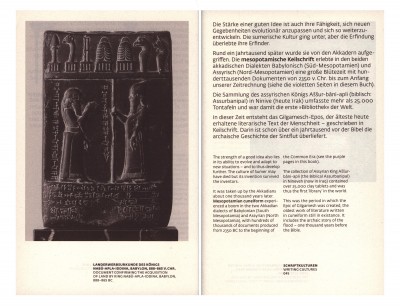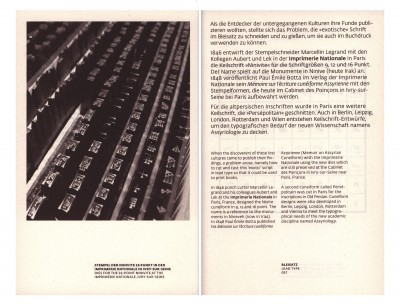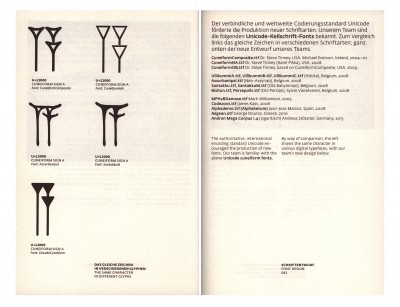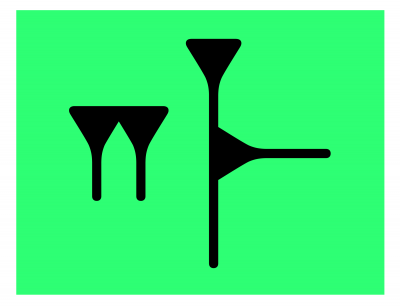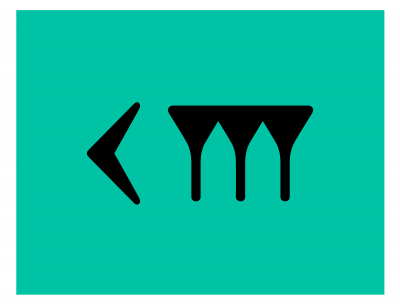News
From the Collection: A Cuneiform Tablet
At 4,000 years old, our cuneiform tablet is the collection’s oldest object. Now we know more about the messages it contains.
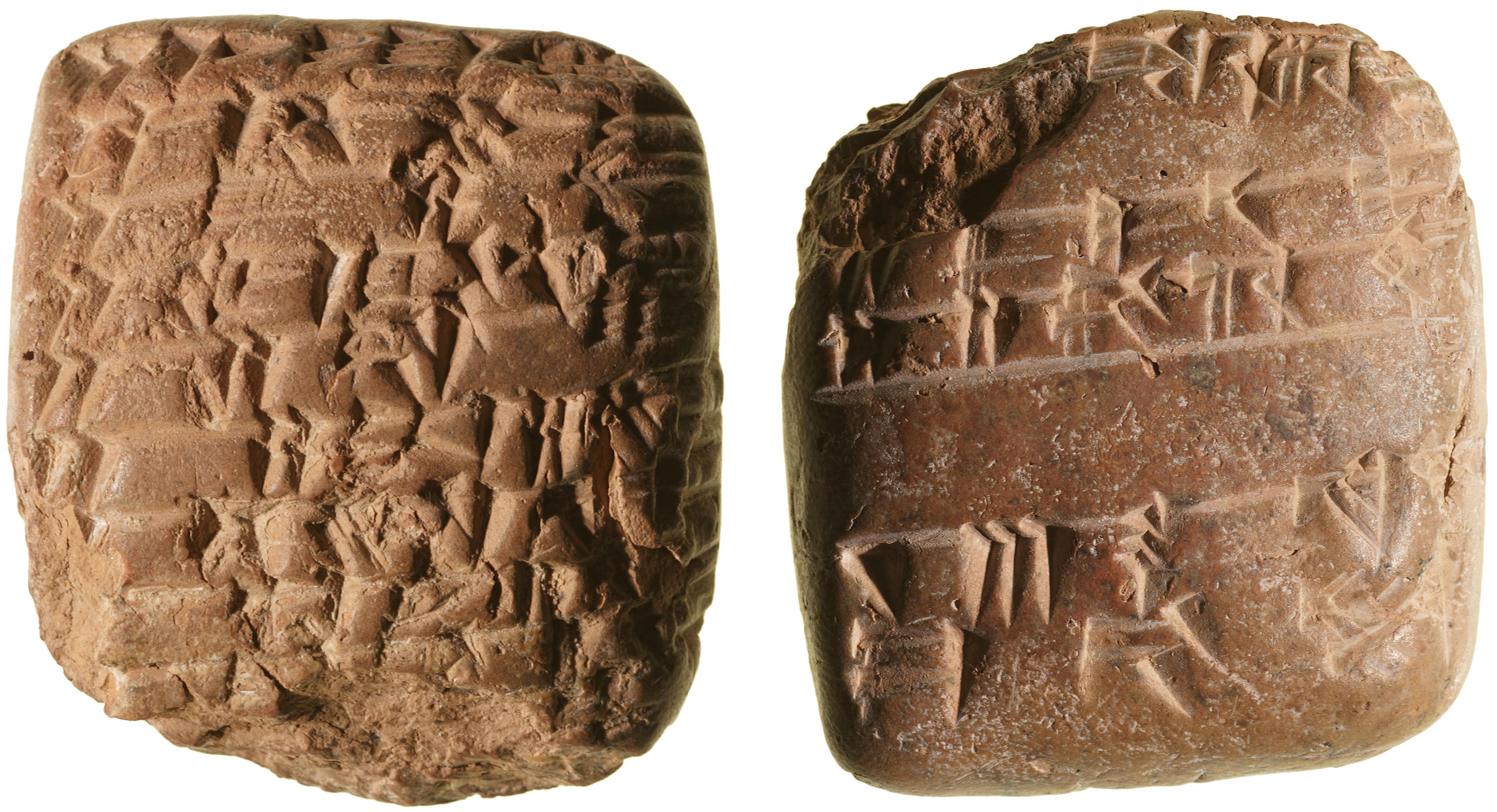
We like to change things up when setting tables for introductory visits, but most tours begin with an unassuming object that’s by far the Archive’s most ancient. Created in Mesopotamia around the second millennium BCE, our cuneiform tablet looks like a rough lump of hard clay, just big enough to rest in your palm. Closer inspection reveals a surface covered with sharp impressions — marks of what many consider the world’s first full writing system.
Cuneiform (the name comes from the Latin for “wedge-shaped“) was also one of the longest-lasting systems of writing, in use between around 3100 BCE and the first century CE. Adapted by speakers of at least ten languages, it mostly functioned as a logo-syllabic script, with hundreds of signs corresponding either to complete words or to distinct sounds made in speech. To write it, a scribe would press a wedge-shaped reed stylus into damp formed clay, leaving regular arrow- and wedge-shaped marks that take on coloring from light and shadows.
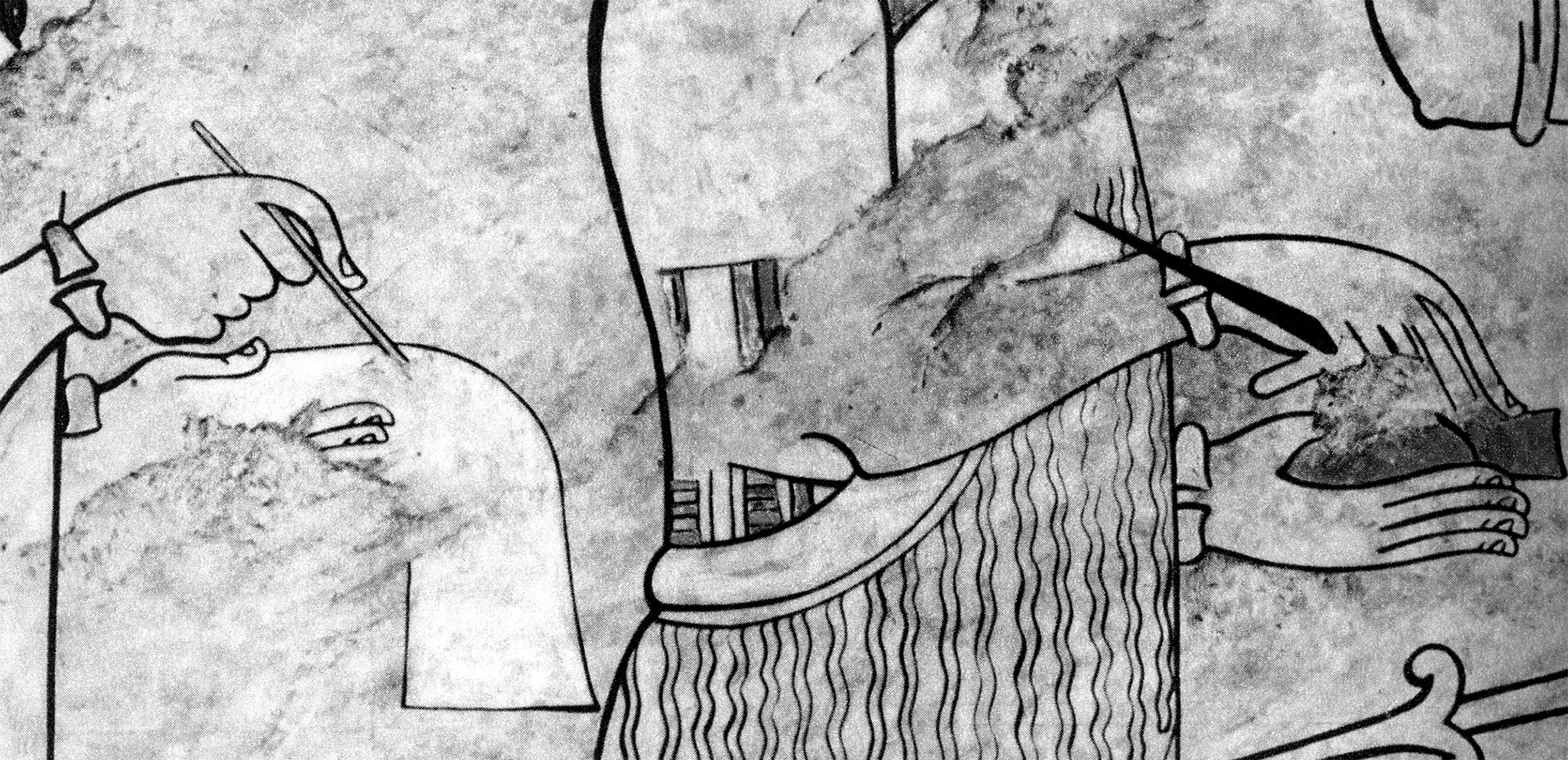
The remarkable differences from scripts and materials we usually encounter makes our tablet a good point of entry to a collection focused on looking at letters. There’s also another reason we like to start with this object. In a collection with so much ephemera — material like type specimens, design sketches, and drink labels that might once have been overlooked or even tossed away — it seems fitting that this fascinating and precious-seeming object was probably a record of some pretty mundane everyday business. We’ve known this much from a scant description acquired with the tablet, but we’ve never been sure what exactly its writing says.
To find out more, we talked to Manuel Molina, a professor at the Spanish National Research Center and one of less than a thousand scholars who regularly read cuneiform texts. Molina is the founder and editor of BDTNS, an online database that aims to record every known cuneiform tablet from the twenty-first century BCE. To date, BDTNS includes data for over 100,000 tablets scattered across hundreds of museums, libraries, and collections, with almost 70,000 transliterations, as well as interactive maps linking objects to excavation sites. Given this immense store of records, representing only a fraction of the estimated 500,000 unearthed tablets now in circulation, we were a little shocked when Molina told us he remembered seeing our tablet once before.
In a 1980 article, William G. Lambert describes two privately held early Babylonian documents that “seem to come from an area and period not hitherto documented.” “From the sign-forms, orthography, and names,” he concludes, “the present writer would locate them somewhere in Northern Mesopotamia, contemporary with the Isin-Larsa period.”1 In other words, the tablets he was looking at were created circa 2004–1763 BCE (about when the Epic of Gilgamesh first appears in writing) in the region spanning Northern Iraq, Northwest Syria, and Turkey. A handcopy Lambert created for his article shows the outlines of the Archive’s tablet.
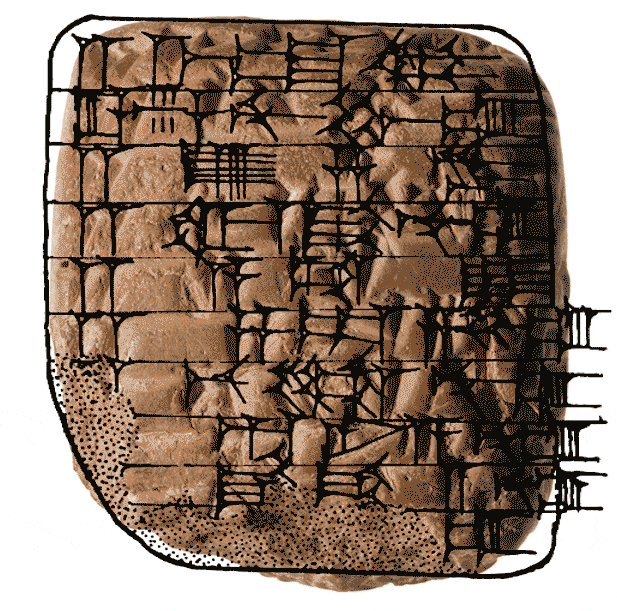
From Lambert, we know it is written in Akkadian, the language that displaced Sumerian as lingua franca of the Ancient Near East in the third and second millennia BCE. His article also provides a transliteration of the tablet’s signs, representing them in Latin script. With this as a guide, Molina generously provided the following translation revealing at last our tablet’s short message:
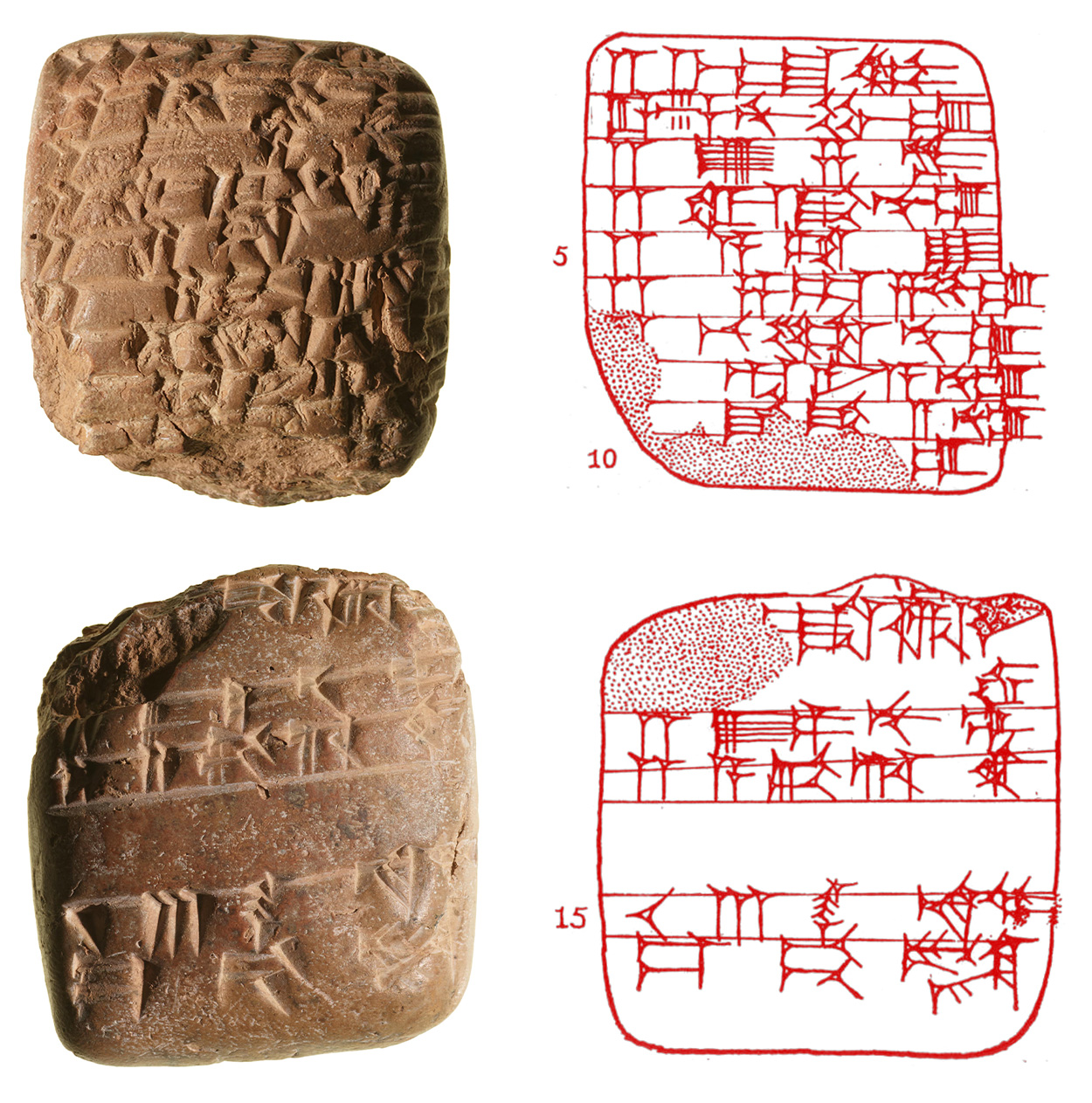
200 bricks (carried by) Unnubum
200 (carried by) Usatum
200 (carried by) Damquanum
200 (carried by) Atalum
200 (carried by) Zabzapum
200 (carried by) Belenum
[200] (carried by) Huli’anum
[200] (carried by) Kakajanum
[200 (carried by) ...]-um
—————
[...]
[200] (carried by) Išar-...
200 (carried by) Sapanum
200 (carried by) Abirih13 men carried bricks
A record of the basic labor performed by a small crew of workers, this text provides a slight yet suggestive view of the ancient Near East. We find a picture of a state-led building project carried out with the help of some remarkably detailed bookkeeping. As a fairly typical document of its age, it reminds us that writing probably first developed in the ancient Near East as a means of accounting for labor and goods. Its scribe, like most writers of the time, would have been a state administrator responsible for tracking production and exchange, managing workers, and noting what dues they were owed. With the aid of writing, these administrators maintained the centralized, and deeply stratified, control over work and resources that appeared for the first time in the region’s early agricultural states. And so, “13 men carried bricks”.
Since the origins of the Archive’s cuneiform tablet are unknown, much else remains covered in mystery. What were they building? According to Molina, “cities and states organized projects of various scales to build temples, palaces, fortifications, and other civic buildings,” but it’s impossible to say where these bricks might have been headed. We’re also unsure how willingly Unnubum and his comrades did all their hauling — whether they were enslaved or relatively free. “It is possible they were laborers obliged to work part-time for the state,” Molina says, “but there are other kinds of labor relations that cannot be ruled out.” As for why this record was so well preserved, Molina offers a couple suggestions. Baked hard by the sun, it might have been kept in an archive that would later be abandoned, or it might have been tossed away when it was no longer needed. “This happens frequently,” he tells us. “Because of their hardness, tablets were even used as filler for walls, where archeologists later find them.” Could it be that this little record of bricks was destined to become one itself?
Tablets were even used as filler for walls, where archeologists later find them. Could it be that this little record of bricks was destined to become one itself?
Also, we don’t know who found this tablet, though if it was an archeologist, they weren’t great about keeping records. Molina observes that since the first Gulf War of the 1990s, untold thousands of cuneiform artifacts have been looted from archeological sites. This is reflected in a dramatic increase of new records in the BDTNS database. While these scavenged materials have helped researchers toward new conclusions, they have also severely challenged efforts to preserve and study ancient cultural heritage. The origin site of one stash with evidence of a Sumerian princess who exercised control over brick-making and construction, for instance, is known only by looters.
Even before cuneiform was deciphered in the mid-1800s, type played a role in making this writing available in less disruptive ways. One remarkable booklet in our Tholenaar collection of type specimens is a 1877 showing of 400 cuneiform characters cut by German typefounder Ferdinand Theinhardt. Recreating the script’s 3D impressions as 2D shapes to be printed alongside standard text, Theinhardt and others made versions of cuneiform scholars could easily read and use in published work.
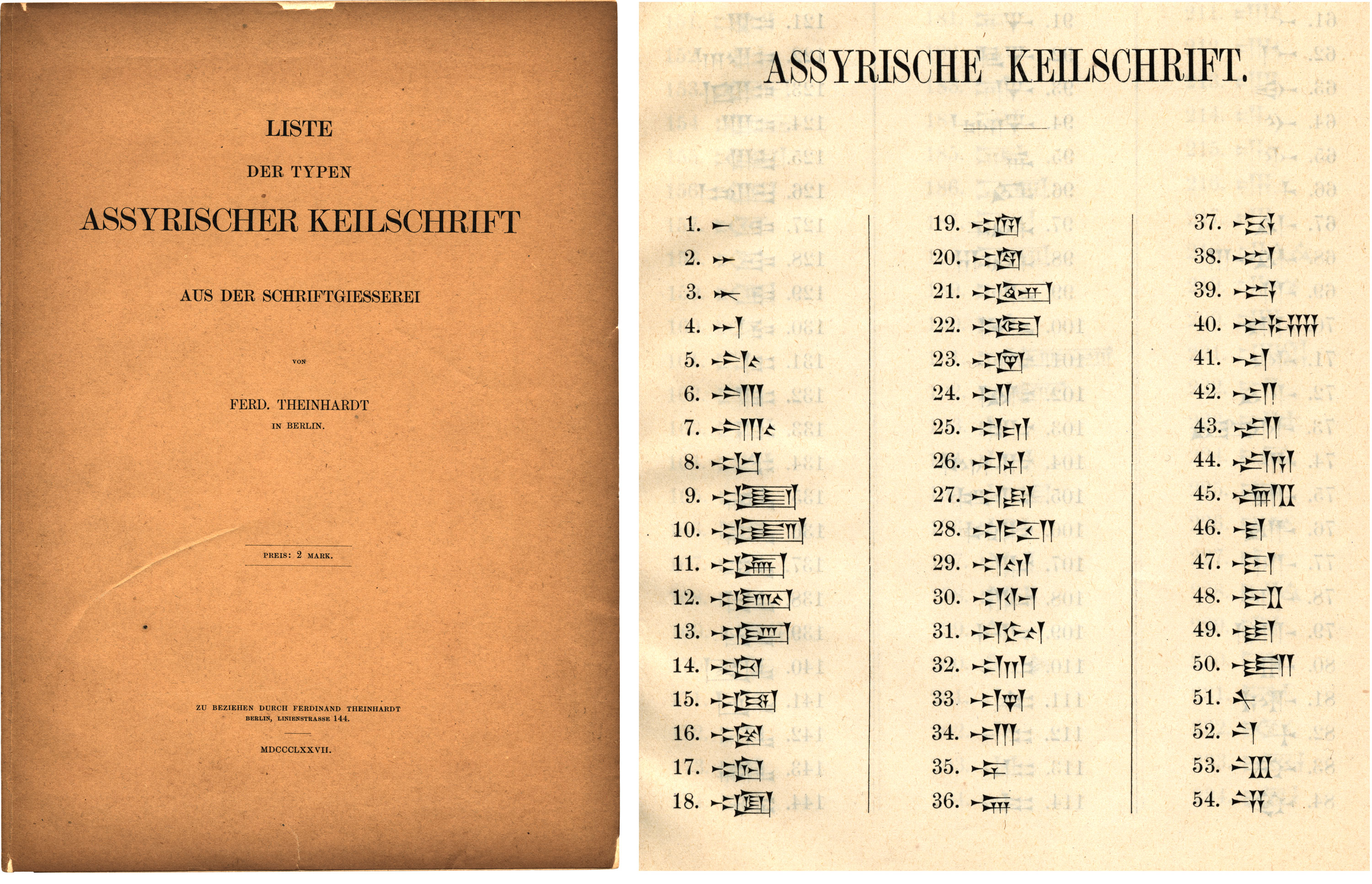
Yet, because such type was rare and required special skill to compose, cuneiform characters were still often reproduced by hand. This remained true well into the era of digital type, as the character limits of early font systems and the lack of shared conventions for entry made cuneiform typesetting a difficult task. This changed in 2006, when 1,063 cuneiform characters were added to the Unicode Standard for digitally encoding the world’s writing systems. In Digital Cuneiform, a 2013 specimen from Johannes Bergerhausen of the decodeunicode project, we can see the full cuneiform character set, which is also accessible on the project website or in comparable font sets, including Noto Sans Cuneiform.
— Chris Westcott, Associate Editor
Sources
- William G. Lambert, “Two Early Babylonian Documents,” Revue d’Assyriolgie et d’archéologie orientale 74.1 (1980): 72.
- Johannes Bergerhausen, Digital Cuneiform (Mainz: Hermann Schmidt, 2013), 79.
- See Stanley Morison, Politics and Script (Oxford: Clarendon Press, 1972), 11.
Further Reading
- MSH Mondes, Cuneiform script: writing and calculating
- Cuneiform Digital Library Initiative (CDLI)
- Database of Neo-Sumerian Texts (BDTNS)
- Electronic Text Corpus of Sumerian Literature
- Hans J. Nissen et al, Archaic Bookkeeping
- Irving Finkel, Cuneiform: Ancient Scripts
- James Scott, Against the Grain: A Deep History of the Earliest States
- Denise Schmandt-Besserat, How Writing Came About
- Maurice Pope, The Story of Decipherment: From Egyptian Hieroglyphs to Maya Script

